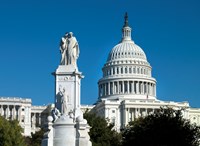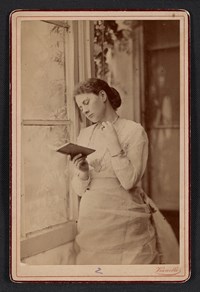- Lewis & Clark National Historic Trail (90)
- Fort Vancouver National Historic Site (70)
- Santa Fe National Historic Trail (53)
- Bent's Old Fort National Historic Site (46)
- Antietam National Battlefield (37)
- Manassas National Battlefield Park (37)
- Boston National Historical Park (33)
- Fredericksburg & Spotsylvania National Military Park (30)
- Fort Sumter and Fort Moultrie National Historical Park (26)
- Show More ...
- National Historic Landmarks Program (18)
- National Register of Historic Places Program (17)
- American Battlefield Protection Program (11)
- National Heritage Areas Program (10)
- Archeology Program (9)
- National Trails Office - Regions 6, 7, 8 (9)
- Historic Preservation Training Center (5)
- National Trails System (4)
- Geologic Resources Division (3)
- Show More ...
Showing 1,331 results for trade unions ...
- Type: Place

Step aboard Pride II, a reproduction Baltimore Clipper, and sail into the Chesapeake’s maritime past. Explore its history from privateering in the War of 1812 to life on the Bay today. Tour the deck or set sail for a hands-on adventure! As part of the NPS Chesapeake Gateways, Pride II offers a unique way to experience the Bay’s seafaring heritage.
Jenny Lake Plaza
- Type: Place

Dive deeper into the history of Grand Teton National Park. Interpretive signs introduce topics like the Greater Yellowstone Ecosystem, grizzly bear research, geologic forces and features, glaciers, and the Hayden Survey. A large bronze tactile relief map will help orient you in relation to where you are in the park. Different peaks, canyons, lakes, falls, and other park features are labeled throughout the map.
Thirty Years of Farmworker Struggle
- Type: Article

Labor organizing has a long history in agriculture. Between 1930 and 1960, diverse groups of farmworkers in California struggled to form unions and to take collective action for better wages and working conditions. This article highlights the political and legal structures that made organizing in the fields especially difficult.
A New Era of Farmworker Organizing
- Type: Article

This article explores changes in farm work and farmworker organizing that took place in the 1960s. The end of the Bracero Program, a strike wave, and the emergence of the Black Freedom Movement, all played a role in expanding the opportunities for farmworker organizing. So too did the emergence of a new organization, the National Farm Workers Association.
A Continuing Struggle
Maria Oakey Dewing
Pecos Mission Church
The Pecos Pueblo
Dunker Church
- Type: Place

The Bayard Rustin Residence is significant as the most important resource associated with Bayard Rustin (1912- 1987), a person of great importance in American political and social history. Born in West Chester, Pennsylvania, Rustin lived a peripatetic life as a social activist and organizer, living intermittently in a number of different homes. In 1962, Rustin purchased apartment 9J in Building 7 of the new Penn South Complex in the West Chelsea section of Manhattan.
- Type: Person

Banastre Tarleton, a British army officer, famously commanded the British Legion, a provincial regiment composed of loyalist infantry and dragoons, in the southern theater under Lord Cornwallis during the Revolution. Feared for his ruthlessness by the patriots, his early successes in the field earned him notoriety. Defeated at the Battle of Cowpens by Brig. Gen. Daniel Morgan, Tarleton's favor with Cornwallis declined. Tarleton was present at the surrender at Yorktown.
St. Vrain's Quarters
Information Panel: The Tide Crests
Information Panel: Retreat From Chinn Ridge
- Type: Place

Colonel Oliver O. Howard's brigade brought up the rear of the Federal flanking column. After crossing Bull Run, the New Englanders hastened toward the sounds of battle. In the mid-afternoon heat, dozens of men straggled on the march or collapsed by the roadside. By the time they reached the front, Union hopes for victory were fading.
Information Panel: Aftermath
Captain James Ricketts' Artillery Position
- Type: Place

The 44-foot high Peace Monument stands in the circle west of the U.S. Capitol at Pennsylvania Avenue and First Street, NW. Inscribed "In memory of the officers, seamen and marines of the United States Navy who fell in defense of the Union and liberty of their country, 1861-1865," this sculptural group has also been called the Naval Monument.
Sgt. William Jones
- Type: Person

William Jones joined the Continental Army at the outset of the American Revolution. H was at the American Fort Schuyler/Stanwix during the Siege of 1777 and saw combat at the 1779 Battle of New Town. Despite having served well for three years, Jones eventually left the new United States for Canada, never returning to the original nation he sided with.
- Type: Place

One of the oldest public parks in Washington, D.C, the land was designated as a public park on the original 1791 L'Enfant plan for the city. During the Civil War, a temporary hospital, known as "Lincoln Hospital" was constructed on the site for wounded Union soldiers. Following the war, the army removed the hospital and Congress appropriated funds to improve the park with flowers, trees and pathways. Then as now, it remains one of the most popular city parks on Capitol Hill










